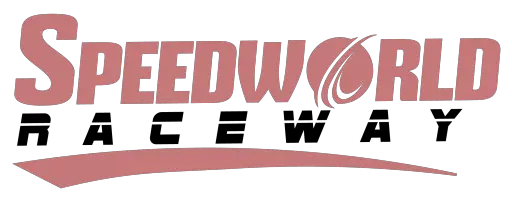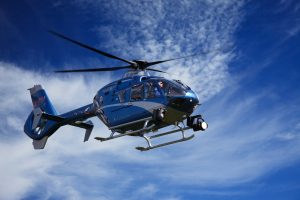Table of Contents
Introduction
You cannot help but wonder when you fly your drone and look at it and wonder what would happen if it unexpectedly lost power. That is because anything can happen, including your drone suddenly losing control. But, if that did happen, could it auto-rotate and go for a safe landing? If so, then drones would not be notorious for crashing as often as they do. That is what you expect to happen to a drone when it loses power.
Therefore, the truth is that recreational drones are not capable of auto-rotation since they have a fixed-pitch rotor design. Drones have to feature a variable pitch design, which is why helicopters are known for auto-rotation. If you are not sure what auto-rotation is, let’s go over that right now.
What Does Auto-Rotation Mean?
Auto-rotation is when the air moves through the rotor instead of using the power from the engine. That is when the aircraft is in the air during a flight. Therefore, when the air moves upward, it lets the blades rotate and turn immediately without relying on the motor. The rotor design makes this possible. However, the aircraft must feature variable pitch propellers to make this happen. Helicopters are known to feature this design, and some drones can also auto-rotate, but once again, not the ones you use for recreational purposes. Sorry, maybe one day they will, but they don’t yet. But for the aircraft that does auto-rotate, there is an important reason for that.
Why Is Auto-Rotation Essential?
What would happen if the helicopter did not have the auto-rotation feature and the engine failed? It would crash, and that would be a complete disaster. Let’s not even go there. Helicopters need the auto-rotation feature because if the engine fails and loses power, the pilot can have the control to guide the helicopter to the ground to safety. Helicopters have to have this feature because engine failure happens while in the air.
And any quadcopter has the auto-rotation feature as it is unlikely to become damaged in a crash. That gives the pilot methods to help bring it down to the ground safely if a problem arises with the engine. However, pilots make common mistakes when there is an emergency and when they attempt to auto-rotate. Let’s go over the common errors that they make in that situation.
What Common Mistakes Do Pilots Make When Attempting To Auto-Rotate?
Unfortunately, pilots have made serious errors when using auto-rotate because of the engine failure on a quadcopter. And that has resulted in crashes or challenging landings. The one common thing is that pilots who did not use the auto-rotate feature correctly lowered the aircraft’s nose immediately after the sudden loss of power. That can cause the helicopter to crash. Additionally, pilots who do not keep the rotor revolutions per minute or RRPM while descending are another reason for this problem.
Also, if the pilot flares or rounds out at the incorrect height when it is too soon or too late can also cause auto-rotate not to work correctly, or, when they do flare, they do it not in an aggressive way. Another problem that often happens is when pilots do not use the auto-rotate correctly, they fail to level out the quadcopter before touching down.
If the pilot can avoid making any of those mistakes when auto-rotating, they will land the quadcopter safely. That is why pilots must learn how to utilize the auto-rotating feature. So, now that you know what auto-rotation is, why can’t drones auto-rotate?
Let’s Talk About Why Drones Cannot Auto-Rotate
Most drone propellers cannot auto-rotate because they are not capable of it. Therefore, when a quadcopter ascends to the sky, a force needs to be created. It must equal or exceed the force of gravity. When the quadcopter’s propellers spin, it pushes the air down. When the propellers force the air towards the ground, there is a reaction force that is equal or opposite. Think about Newton’s Third Law.
As this happens, the air pushes the rotor in an upward position to lift the drone. That force is known as the thrust, which becomes more potent when the rotor and propellers spin quickly. Therefore, the drone’s creation of the thrust has to exceed its weight to take off. Unfortunately, recreational drones can’t do that.
The only drones that may one day have the auto-rotation capability are the Ehang 184, which will have the ability to carry humans. There is a lot of fine-tuning that the engineers have to complete before making the Ehang 184 available widely. Auto-rotation is something that they will have to do since it is a safety issue. However, right now, the drone has a fixed-pitch rotor.
Drones With Fixed-Pitch Rotors Cannot Auto-Rotate
Unfortunately, drones or quadcopters cannot auto-rotate if they have a fixed-pitch rotor. However, in rare cases, there are exceptions. Therefore, drones can auto-rotate if you can face the wind and have a forward center of gravity. You have to have the battery eject itself out of the drone to meet the requirements for the center of gravity. But that explains why you lost power in the first place. When it comes to the wind direction, you cannot control that. If you do happen to lose power, it is the luck of the draw to face the wind, so it has the auto-rotation capability. If you can meet these conditions where one is out of your control, that can increase the chances of auto-rotation, which means it may land safely.
Conclusion
If you have a drone‘ and wonder if there is a chance that it can land safely through auto-rotation, unfortunately, it cannot. That is because the auto-rotation design among drone propellers does not support how it helps helicopters. Drones have a fixed-pitch motor, whereas helicopters have a variable-pitch rotor, and fixed-pitch rotors do not have auto-rotation capability. So, unfortunately, if the drone loses power in the air, it will come crashing down like a brick. However, the good news is it is not common for that to happen as long as the battery has enough power. Sure, problems can occur in the motor that can cause it to happen, but that is the exception and not the rule.

